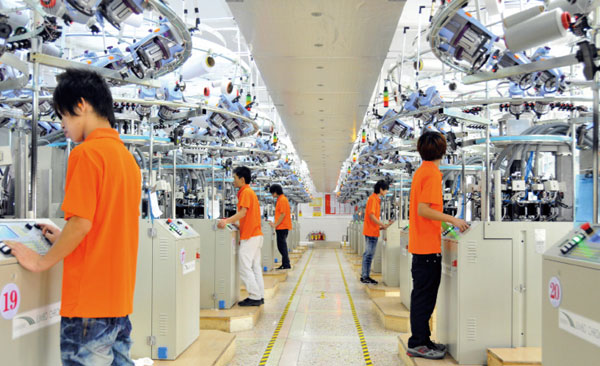Clusters of strategic and future industries mapped out for economic leadership
Guangdong aims to develop a biopharmaceutical and healthcare industry cluster with a combined output value of more than 1 trillion yuan ($140.82 billion) in 2027, according to a plan released by the provincial government.
The action plan for promoting the high-quality development of the biomedical industry in Guangdong, issued on Oct 9, projects the scale of the local pharma enterprises, each with annual business revenue reaching 20 million yuan, to surpass 500 billion yuan by 2027.
Its goal is to develop at least 15 businesses, each with annual revenue exceeding tens of billions of yuan to hundreds of billions of yuan; form a group of specialized and innovative companies in specific fields; foster unicorn companies — startups valued at more than $1 billion — and industry champions; and promote well-known domestic and foreign pharmaceutical companies to establish regional centers in the province.
To this end, the action plan has listed 38 tasks and measures centering around multiple areas including innovative mechanisms, product upgrading, industry clustering and building an industry-friendly environment.

Using a computer's numerical control system, workers operate machines on the production line of a textile company in Shantou, Guangdong province. CHINA DAILY
Competitive strengths
Over years of development, Guangdong has established a foundation and advantages in growing the biomedical industry.
Since 2018, large-scale biomedical industrial enterprises in the province have seen an average compound annual growth rate in their operating revenue exceed 10 percent.
The biomedical and healthcare industry cluster in Guangdong achieved 663.8 billion yuan in operating revenue in 2023, putting the province at the forefront of the country.
Guangdong has also maintained its No 1 position in China for years in terms of medical device industry scale. Currently, there are more than 58,000 people working in research and development in the biomedical industry.
"This plan fully demonstrates Guangdong province's emphasis on the biomedical industry. In this plan, I see many opportunities, such as building platforms," said Liu Jian, CEO of the Bioisland Innovation Center at BeiGene.
"China established many incubators before, but now it is not just about incubation; researchers themselves also engage in commercialization and industrialization of their research achievements. Currently, institutions such as the Shenzhen Bay Laboratory and Guangzhou Laboratory are focusing on commercialization and industrialization of research results. The release of this plan, I believe, will provide further support for accelerating the commercialization of related achievements."
Michael M. Yang, senior vice-president (innovation and enterprise) of City University of Hong Kong and the Yeung Kin Man chair professor of biomedical sciences at the school, said that the development of the biomedical industry requires collaboration and cooperation among various sectors such as government, industry, academia, researchers, investors and medical professionals.
The Guangdong-Hong Kong-Macao Greater Bay Area, which has abundant industrial and supply chain resources, as well as a foundation for innovation, can play an important role in the global collaborative development of the biomedical industry, he said.
Modern system
The biopharmaceutical and healthcare sector is one of the 10 strategic pillar industry clusters that Guangdong is developing.
In June 2020, Guangdong proposed to ramp up the construction of a modern industrial system led by scientific and technological innovation, by developing 20 strategic industry clusters.
Of them, 10 focus on the strategic pillar industries of new-generation electronic information; green petrochemicals; smart home appliances; automobiles; advanced materials; the modern light industry and textiles; software and information services; ultrahigh-definition display; biopharmaceuticals and health; and modern agriculture and food.



 Print
Print Mail
Mail

